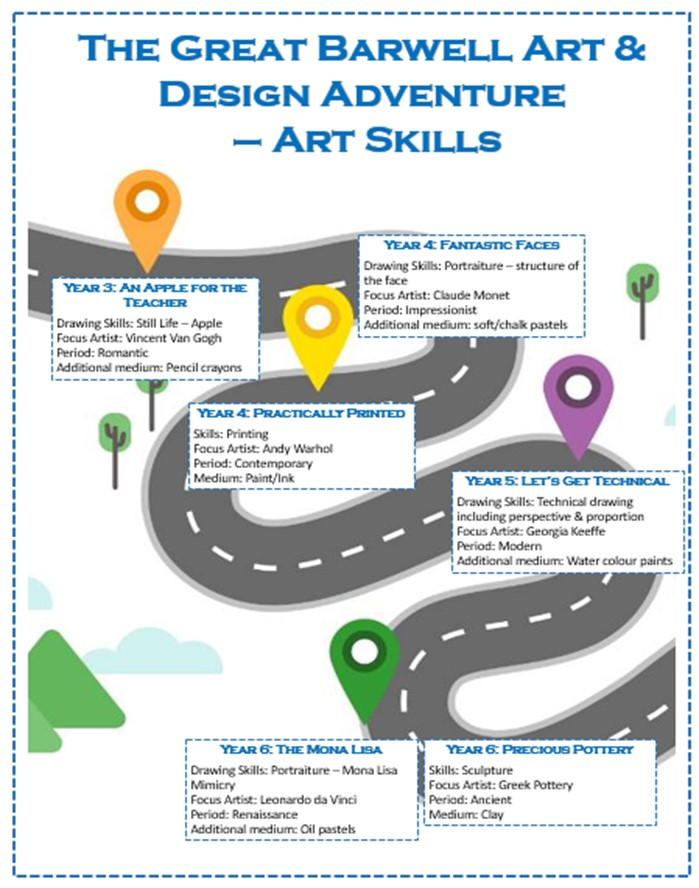Art and Design
Art, craft and design embody some of the highest forms of human creativity. A high-quality art and design education should engage, inspire and challenge pupils, equipping them with the knowledge and skills to experiment, invent and create their own works of art, craft and design.

Our Art & Design curriculum is founded in knowledge. This ensures that the learning becomes priority, not the project. Although we want to engage children with different mediums and to have fun within their art so that they become inspired to explore more, we also wish for them to develop skills and their understanding.
Our Art and Design Vision:
"At Barwell Church of England Academy, we aim to teach Art and Design in a fun and creative way. Our aspiration is to ensure that children are engaged, inspired and challenged throughout each topic. We believe that art stimulates creativity, imagination and inventiveness. We believe that art gives our pupils the skills, concepts and knowledge necessary for them to express responses to ideas and experiences. It fires their imagination. "
Our Art and Design Curriculum
Our Art & Design Curriculum has been split split into six Learning Journeys during the children’s time in our school. The bulk of the curriculum is taught in a weekly afternoon session by one of our highly skilled Higher Level Teaching Assistants. Each of the Learning Journeys is designed to last half term.
As Art and Design/Design & Technology are both taught during our PPA slots, we have split the learning of the two subjects across the year. This is so that those units that require longer for the whole Learning Journey are able to have the extra weeks that some of the longer terms provide.
The structure of the two curriculums is as follows:

As children progress though our school, their Art & Design journey will give them the chance to develop their key skills in a variety of mediums, learn about four key artists and the period they were from, recreate famous pieces of artwork and produce a final project for each unit based on the key skills they have been developing.
In addition to specific Art & Design lessons, various Art topics will be used throughout other areas of the curriculum to support learning and to give children the opportunity to develop and embed their skills.
As children progress through our school, they will follow this journey in Art & Design:

Inclusion in Art and Design
We do not want to put a ceiling on our children’s learning. It is imperative that all children, especially those with special education needs or disabilities, access an ambitious, broad, challenging and inspiring curriculum. It should not be narrowed nor should the default position be to expect children not to be able to achieve. High expectations of all of our children are at the heart of our vision and this of course includes all children and all areas of the curriculum.
